Alcohol-Medication Interactions: Potentially Dangerous Mixes National Institute on Alcohol Abuse and Alcoholism NIAAA
P2 amplitude was,however, smaller in alcoholics than controls with the difference being largest at Cz,where the component was maximal, but smaller at other sites (see Figure 5). There were no sexdifferences or interactions between diagnosis and sex for K-complex incidence, P2amplitude 5 key differences between crack and cocaine or P2 latency. Frontal (but not posterior) N550 and P900 amplitudes were smallerin alcoholics than controls and smaller in men than women, but the sex difference was notrelated to diagnosis. Latencies of N550 and P900 did not differ as a function of diagnosisor sex.
Terminology
Binge drinking is on the rise for multiple groups of the U.S. population, according to the NIAAA. Alcohol consumption can be a trigger for sleepwalking break the cycle of addiction with these strategies to keep dopamine in check or talking during sleep. Sleepwalking can lead to injuries, disrupt sleep, and leave a person feeling fatigued and not well-rested after waking.
1 Acute effects of alcohol on sleep: repeated administration
This includes feelings of anger, anxiety, depression, and other negative emotions. Long-term overuse of alcohol can cause physical and psychological dependence. People who are dependent on alcohol may experience withdrawal symptoms when they try to quit drinking. These symptoms may range from nausea and anxiety to seizures and hallucinations. Both sedatives and alcohol have mind-altering effects and can lead to poor decisions and risky behaviors.
Medical Professionals
Joining a support group or a 12-step program such as Alcoholics Anonymous may help. Don’t stop taking an antidepressant or other medication just so that you can drink. Most antidepressants require taking a consistent, daily dose to maintain a constant level in your system and work as intended. Stopping and starting your medications can make your depression worse. Patients addicted to these medications should undergo medically supervised detoxification as the dose must be gradually tapered off.
Nutrition and Sleep: Diet’s Effect on Sleep
We provide links to resources to help you mitigate these risks, including a consensus-developed list of potentially serious alcohol-medication interactions in older adults. If you’re at low risk of addiction to alcohol, it may be OK to have an occasional drink, depending on your particular situation, but talk with your doctor. However, these drugs are prone to misuse and may cause severe side effects.
Another possibility is that alcohol abuse leads to long-lastingneurochemical changes in the brain stem. Figure 2 (adapted from (Colrain, Turlington, and Baker 2009b) gives an example of theproportions of wakefulness (pre-sleep and throughout the night), and different sleep stagesin alcoholic and control men and women. Effects of an acute pre-bedtime dose of alcohol on sleep have been extensivelystudied although methodology has varied greatly between studies in terms of dose and timingof alcohol administration, age and gender of subjects, and sample size. In the second half of thenight, sleep is disrupted, with increased wakefulness and/or stage 1 sleep. It is estimated thatalcohol is used by more than one in ten individuals as a hypnotic agent to self-medicatesleep problems (Arnedt, 2007). One important finding of the present study is that alcohol increased CSP duration as compared to placebo treatment, which is in line with previous TMS work [21, 23].
Recognizing dependence and withdrawal symptoms
- Many people think that a little nightcap will help them sleep soundly through the night.
- Your doctor may also be able to recommend an addiction counselor, therapist, or a treatment center that can address both the medical and psychiatric effects of addiction.
- That’s because as alcohol starts to metabolize, the sedative effect wears off.
- Finally, although SICI was not modulated by alcohol ingestion, it positively predicted the feeling of sedation.
- Depressant effects of alcohol occur when your BAC reaches about 0.08 mg/l.
Drinking alcohol can have serious consequences if you’re being treated for anxiety. Having a drink might seem like a good way to ease anxiety, but you may be doing more harm than good. Stimulants alcohol use and death by suicide and depressants both affect your nervous system and brain function, although in opposite ways. A person should speak with a healthcare professional to learn more about healthy alcohol use.
For over 20 years Dr. Umhau was a senior clinical investigator at the National Institute on Alcohol Abuse and Alcoholism of the National Institutes of Health (NIH). However, you can make lifestyle changes to help you reduce your anxiety as well as learn to cope with it. To get a rough understanding of how many drinks it would take you to reach these BAC levels, there are many calculators available online. A person should speak with a healthcare professional if they think they have AUD. A psychotropic substance impacts the brain and can affect thoughts, mood, or behavior. American Addiction Centers (AAC) is committed to delivering original, truthful, accurate, unbiased, and medically current information.
The drug, called medetomidine, is linked to a recent spate of deadly overdoses throughout the Midwest and Northeast. It dramatically slows down breathing, heart rate, blood pressure and decreases activity in the brain and spinal cord. Participants were weighed on a medical-grade weight scale, which was used to adjust the quantity of alcohol and volume of liquids that needed to be ingested. After the localization of the motor hotspot and resting motor threshold (RMT), data collection began. Breath alcohol concentrations (BrAC) were assessed using the BACtrack mobile device (Breathalyzer.ca ®) [57] before and every 15 min up to a total of 120 min following complete ingestion of the beverage. The Brief-Biphasic Alcohol Effects Scale (B-BAES) questionnaire evaluating the biphasic subjective effects of alcohol [38] and TMS measurements were taken before and every 30 min up to a total of 105 min following complete ingestion of the beverage (see Fig. 1A).
The percentage of (A) slow wave sleep (SWS) and (B) rapid eye movement (REM) sleep in thefirst half of the night across multiple nights of drinking. Data are drawn from (Feige et al. 2006; Prinz et al. 1980; Rundell et al.1972). Alcohol can cause sleepiness and may initially have a sedative effect. This is because it depresses the central nervous system and enhances the effects of the GABA neurotransmitter, which slows brain activity.
This article reviews the effects of alcohol, both as a stimulant and a depressant. A person should speak with a doctor about healthy alcohol consumption. The amount of alcohol a person consumes affects them more than the type of alcohol they drink. Naltrexone and acamprosate can both reduce heavy drinking and support abstinence.
However, misuse of stimulants can have serious health consequences, including physical dependence and stimulant addiction, also known as stimulant use disorder. Both sedatives and alcohol interact with the chemical makeup of the brain, changing the way a person thinks, feels, and acts. Continued use of either one of these substances can be habit-forming, and when they are combined, the odds of developing a physical dependence on one or both goes up.
Approximately 50% to 60% of your body weight is water, and you are constantly losing water through urine, sweat, and breathing. Consuming a sufficient amount of fluids in beverages and water-filled foods (such as fruits, vegetables, and soup) will help you maintain your energy. Don’t feel like there’s something wrong with you or a loved one with an addiction or that you’re failing yourself or others. Talk to your doctor if you feel like you can’t stop yourself from using sedatives.


